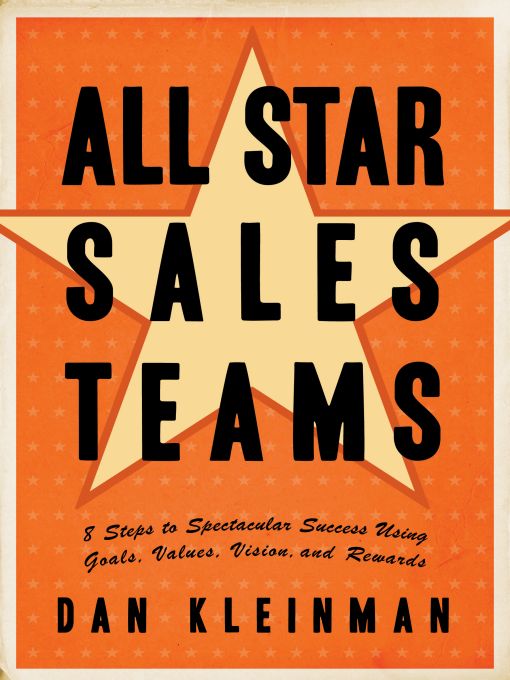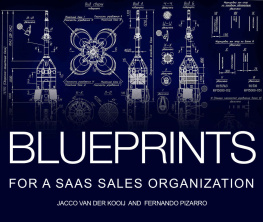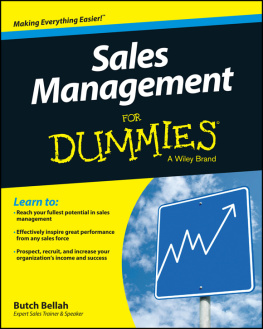
Table of Contents

To Judy and Erin
for their patience in everything,
and
to Michael Snell
for his patience with this.
Introduction
For the president of one of the nations leading specialty food manufacturers it is dj vu all over again. Whether the economy is up or down, or at a predictable point in the life cycle of his sales staff, many of his best people will be lured away to other companies. Expenses climb as it takes more money to either keep his current staff in place or recruit new talent. Then there are his marginal players, who continue to stay marginally in the game. Why cant he get them to leave? He feels a hostage of the 80/20 rule. Twenty percent of the s taff makes 80 percent of the difference, and that 20 percent pushes the increasing cost of his entire payroll. His expenditures grow faster than the productivity being generated.
As this president mentioned to me, his concerns are echoed by his peers. He exchanges ideas regularly with a group of executives from various industries, but with companies of similar size and maturity. Cost of doing business, they all lament.
They are wrong. And in the weeks following our discussion, this president proved that by creating an unbreakable relationship between productivity, rewards, retention, and development, he raised the bar and he banished mediocrity. He established a cyclical climate in which increasing revenues funded a reward system that focused on both retaining his key players and developing his overall staffs potential. Those rewards, and that focus, produced more revenue and continue to keep the cycle going.
Last year, there were more than 14 million people directly engaged in the act of selling products and services in the United States. They were paid in excess of $260 billion. How many other company CEOs and heads of sales feel they arent maximizing the costs associated with their selling efforts? How many feel they are not really in control of linking what they spend with what is produced?
After 30 years of designing sales reward plans for companies large and small, across a wide variety of industries, I have found that productivity and retention disappointments are rarely the results of a companys compensation structure. While some managers are always looking for the silver bullet (that one plan that will cure all ills), most come to realize that pay is part of a larger, but less costly, productivity and total-reward strategy.
Smart leaders do it differently, using the strengths of their organizations to become employers of choice. They prepare their sales teams to help structure a powerful reward system. They pay people appropriately, but always within the context of clearly expressed and compelling company values and goals.
Good salespeople expect a reward system to align with the realities of their environment, to focus on key deliverables, and to generate enthusiasm. Sales stars expect more. They expect vision, inclusion, and competence to frame continued success; they expect personal, professional, and organizational growth. Sales stars expect a lot, and they give a lot in return.
At times, customers or clients can get a better deal with another supplier or service provider, but keep coming back to the salesperson with whom they have a good relationship. Salespeople who command such loyalty listen carefully and respond decisively, and always act in their customers and their companys best interests, earning trust and respect. If, due to a promotion or transfer, sales stars move on, clients and customers want to know how to continue to do business with them.
All Star Sales Teams is about sales starskeeping them and growing them to form the organizations most productive nucleus. Growing a great sales team isnt just about meaningful rewards; its about cultivating a productive team environment.
Sales stars gravitate toward strong managers who create a work environment that encourages people to thrive. Strong managers are ethical, balanced, and consistent. They care about the well-being of their staff, their community, their investors, and their customers. And they stay one step ahead, always planning, seldom surprised. They understand and control the sales processincluding rewards.
This book identifies eight critical actions a company has to take before it can succeed in creating a productive environment where the right forms of reward produce the right kinds of behaviors. Each chapter addresses one of these critical actions:
1. Planning for change. Ensuring that whatever changes are made reinforce your organizations vision, strategy, and operating style.
2. Tailoring a compensation plan whose approach and result measures are aligned with your direction and priorities.
3. Identifying who you are as a company and letting that drive what marketplace information you need to establish sales rewards.
4. Linking realistic rewards, results, and staff expectations.
5. Maximizing the strengths of your sales management and neutralizing any weaknesses.
6. Engaging your sales staff in a participatory but balanced process of defining their reward structure.
7. Establishing a climate where involving departments other than sales in reward design is seen as both a valued responsibility and an expression of recognition.
8. Streamlining the rewards design process.
Without addressing these stages of sales reward development, finding and keeping the staff a company wants, and having the productivity it needs, will be a constant and futile effort. All Star Sales Teams equips a company to successfully integrate these sustainable actions into its organizational fabric and truly turn its sales force into a group of all stars.
Clarify Your Sales Objectives: Planning for Change
Planning Pitfalls
Considering that we had just met, Jed was a little too glad to see me. I wondered if this CEO expected me to provide a silver bullet to eliminate whatever problem was troubling him. He didnt keep me in suspense. As we sipped our obligatory cups of coffee, he explained that the firms last two quarterly financials confirmed that business was okay, but not what shareholders, investors, and analysts had expected.
He stood up and began to pace. Maybe his key products life cycle had reached its tipping point; maybe it was the way his company had been approaching the market; maybe it was the sales staff. He stopped and rolled his eyes. The sales staff was driving him nuts. A few superstars surrounded by mediocrity. There were too many maybes. He could feel his organization going on defense while his competition was on offense.
I offered a cautious question. When we set up this meeting, you said you were about to launch a new initiative?
Id heard youre the guy we needed to put together a pay package that gets our sales staff producing better resultsresults that would be based on our new initiative. Well, things have changed since I first called you.
Jed explained that he and his inner circle of seven had met for an off-site day of planning. When they gathered, he outlined the critical nature of the meeting. He told them the companys future hinged on their ability to plot a course out of the morass. In spite of some initial acting out around vested interests, the overall result was positive. At the end of a long day there were handshakes and backslaps as they left the meeting room. They had a plan, a strategy, for improving sales.
Next page






